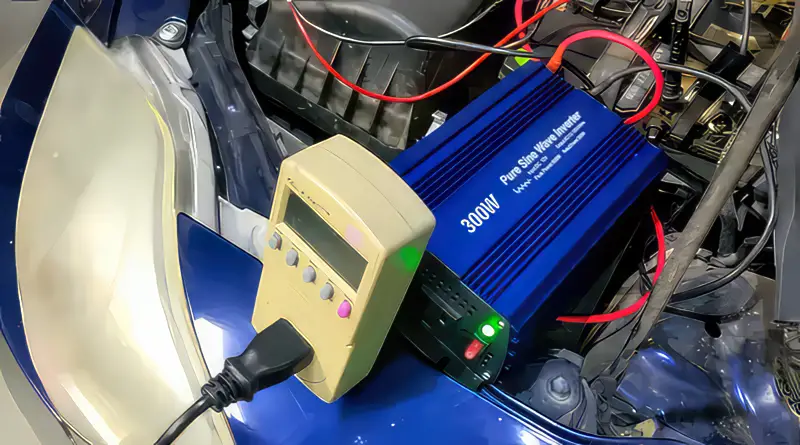A man decided to look into charging his E-Bike on the go so he’d never have to be stuck outside. He thought of investing in a good solar charger for his bike out of the Best Electric Bike Solar Charger Options we reviewed, but there were a lot of other power sources available too. He had a choice between these special solar chargers or charging E-Bike battery with inverter.

If he didn’t use an inverter with other power sources, including normal solar panels, he could overheat and even burn his bike. Why do you think that is?
What’s an Inverter?
An inverter is a device that converts DC (Direct Current) into AC (Alternating Current) and helps power your appliances. Batteries and solar panels provide you with DC, while your appliances use AC when charging. An inverter helps bridge this gap by converting the direct current from the battery into an alternating current your appliances can take.
Why do you need one? Well, charging appliances on DC overheats them which can cause serious damage, and charging E-Bike battery with inverter will prevent that.
Can You Charge an E-Bike With an Inverter?
Yes, you can. If you can get a strong enough inverter — one with at least 1000W of power — you can hook your E-Bike to a solar panel or battery easily.
Camper vans, cars, solar panels, and batteries all produce a voltage of about 12v. The inverter converts this into 230v, and E-Bikes require this voltage to charge.
E-bikes need inverters that operate on pure sine waves, and cannot be charged with an inverter working with a modified sine wave. E-bike chargers are made for household power sources that provide pure sine wave voltage. Using a modified sine wave inverter might overheat the system and even damage your battery and bike.
True sine wave inverters are expensive, and one that can provide 1000w of power won’t come cheap. You can expect to pay $200 and above for an inverter strong enough to charge your bike.
Charging an E-Bike Battery With an Inverter
Charging E-Bike battery with inverter is easy, as long as you choose the right charger and inverter. The voltage your charger can bear should be about 6v greater than the voltage of your bike; for example, a 32v E-Bike needs a 38v charger.
You also need an inverter with a greater capacity than your required wattage, as this will help reduce the impact of any power surges.
Simply plug in your inverter in any power outlet, solar panel, battery, or even a car, and plug your E-Bike charger into it. Your bike should start charging immediately.
How long till it’s done? A fully depleted lithium E-Bike battery can take anywhere from 3 to 6 hours to charge. Unplug your bike once charged and wrap your equipment up.
Conclusion
Almost all power sources, except household power outlets, provide you with DC power while your appliances need AC. If you want to charge your E-Bike, an inverter is the best way to bridge this difference.
Inverters are easy to carry, aren’t costly, and can power all other appliances too. They are also compatible with all backup power sources, making them an excellent investment for E-Bike charging.


